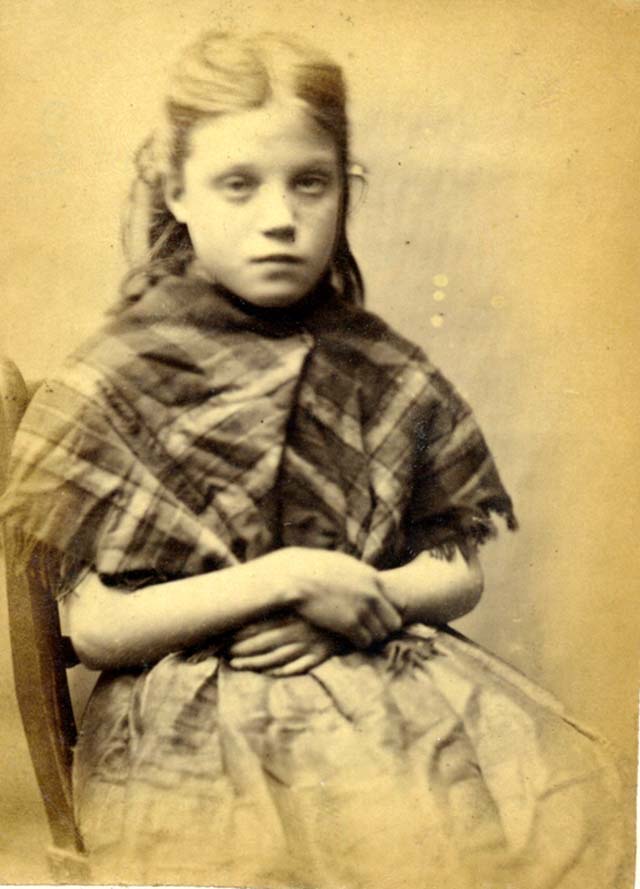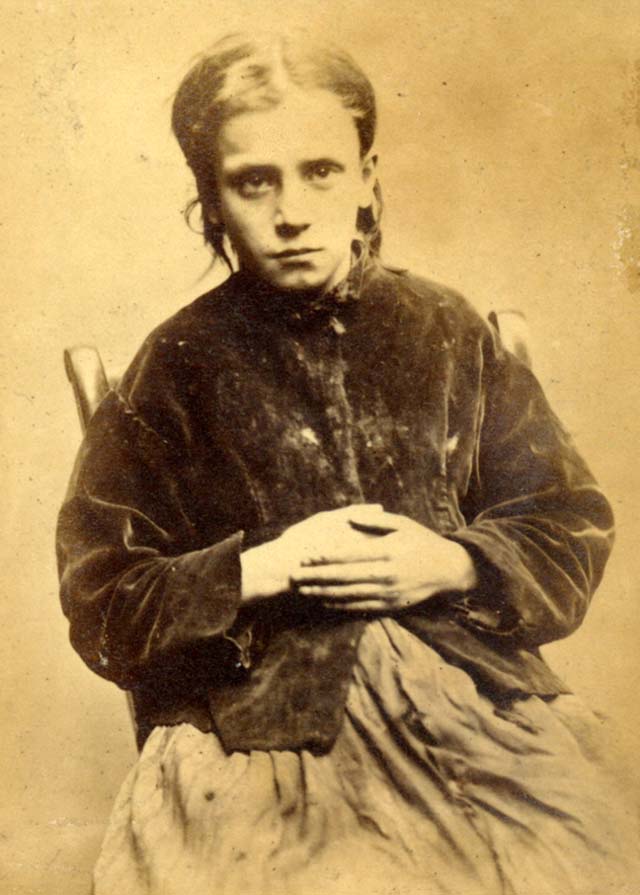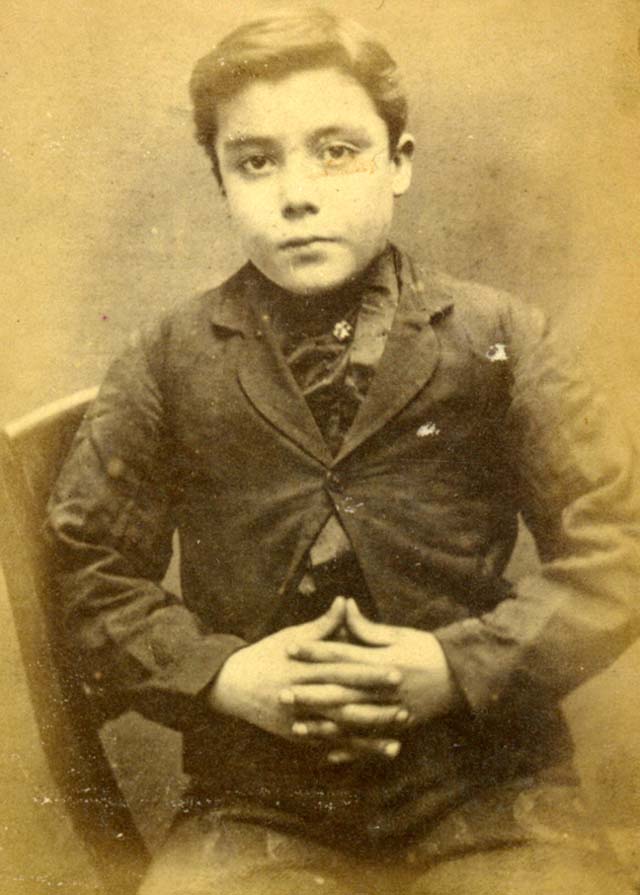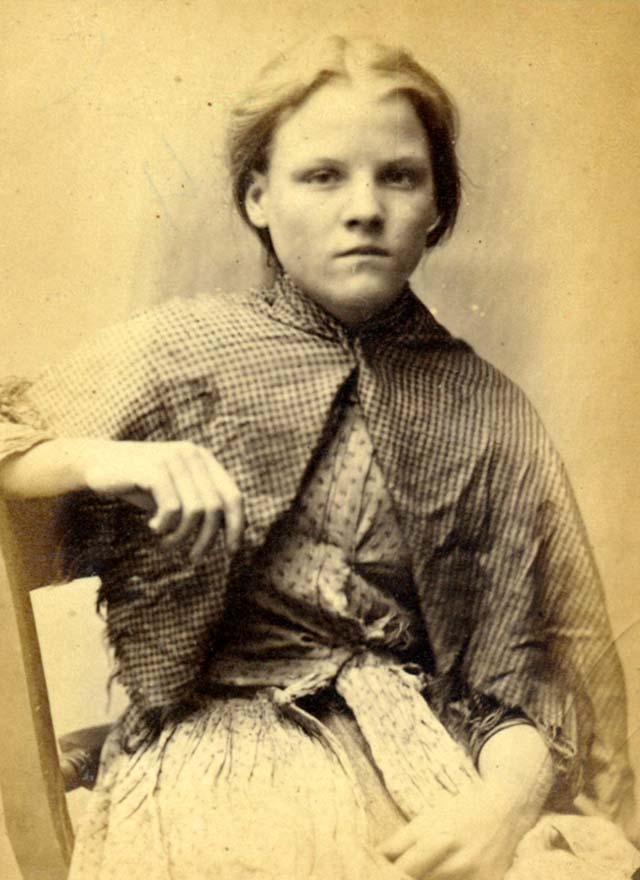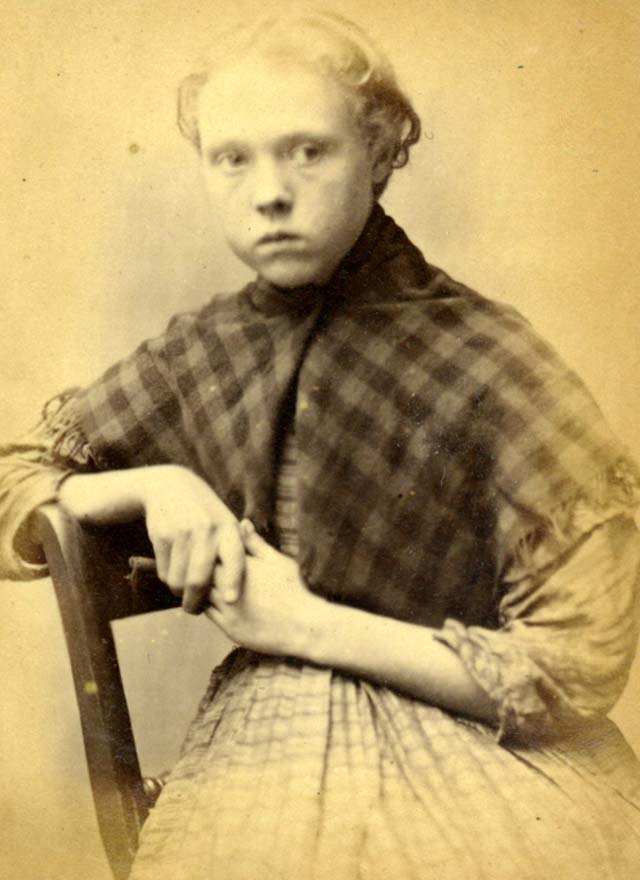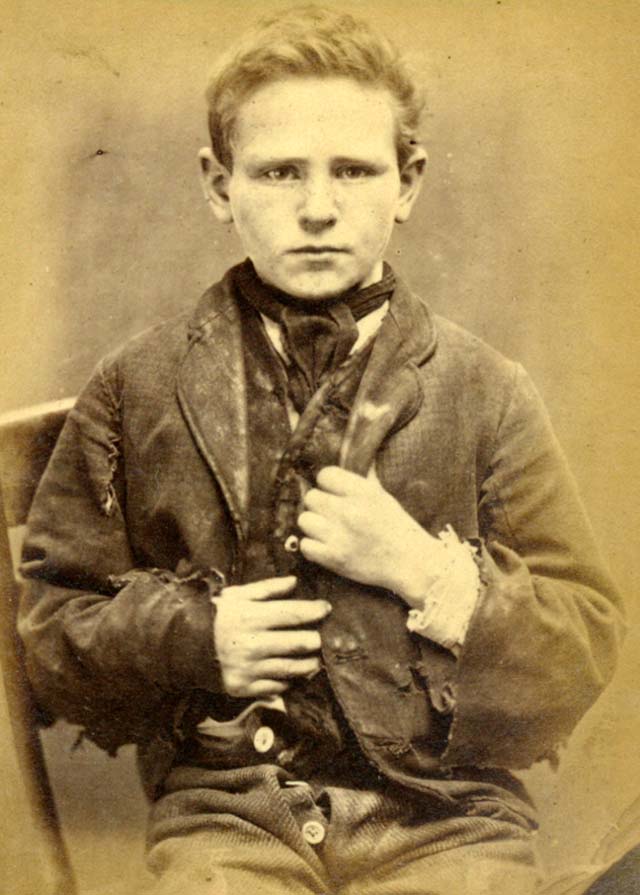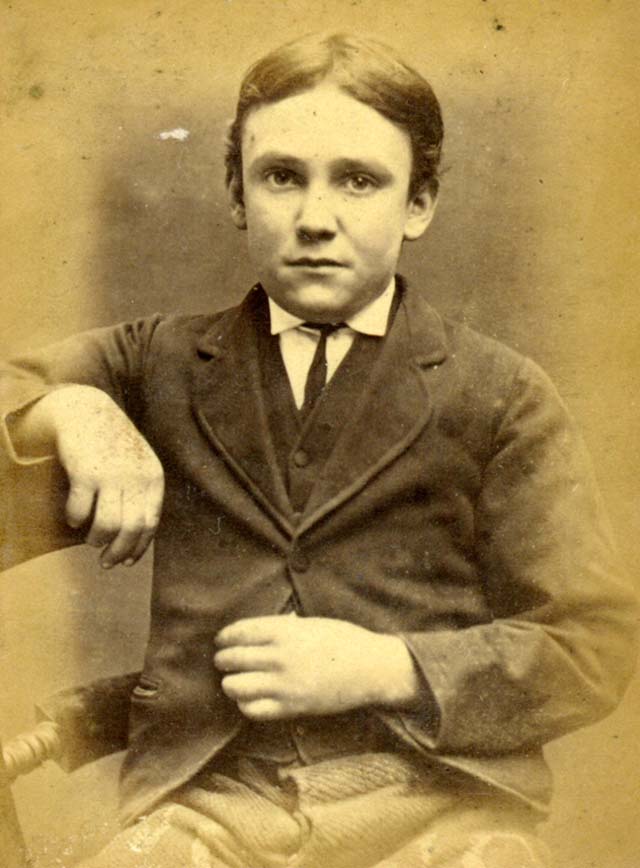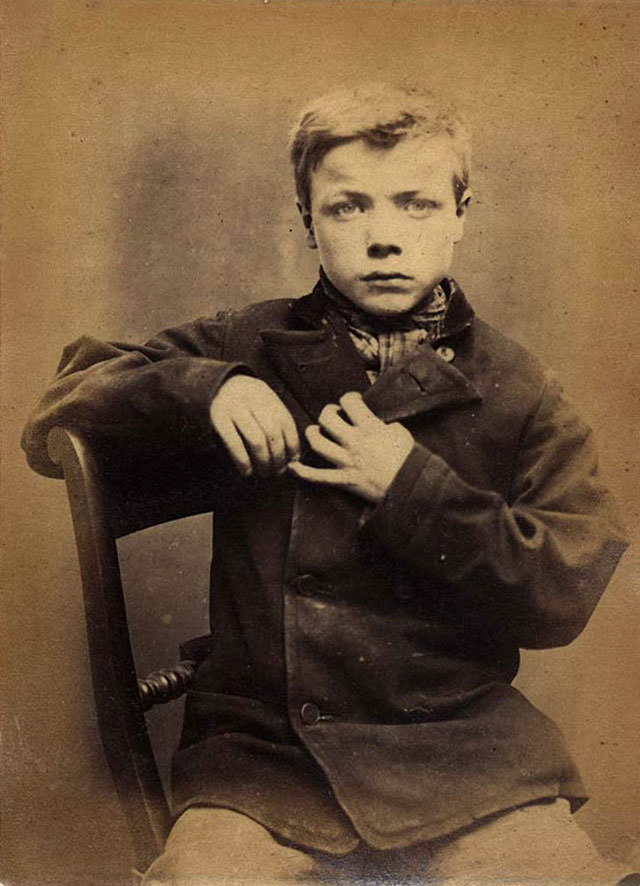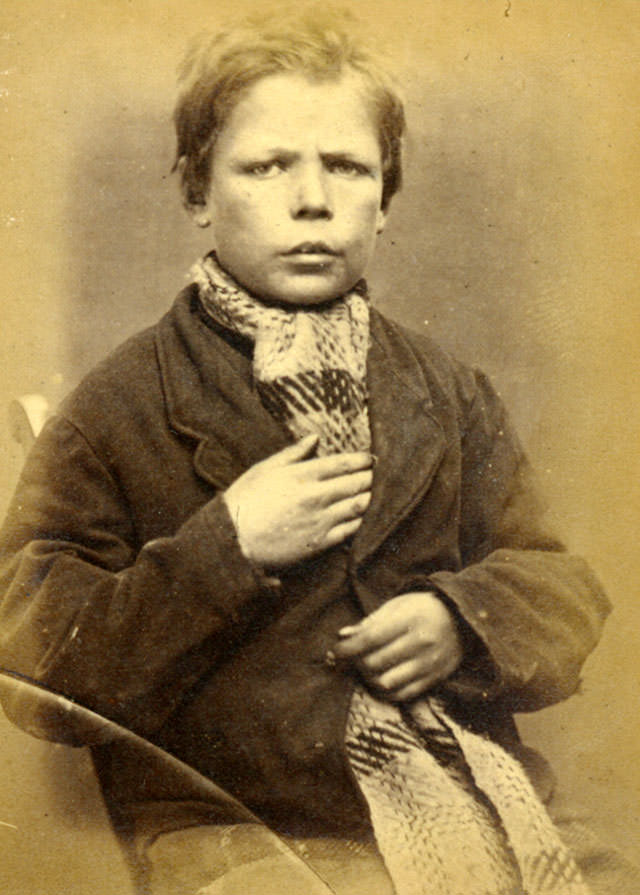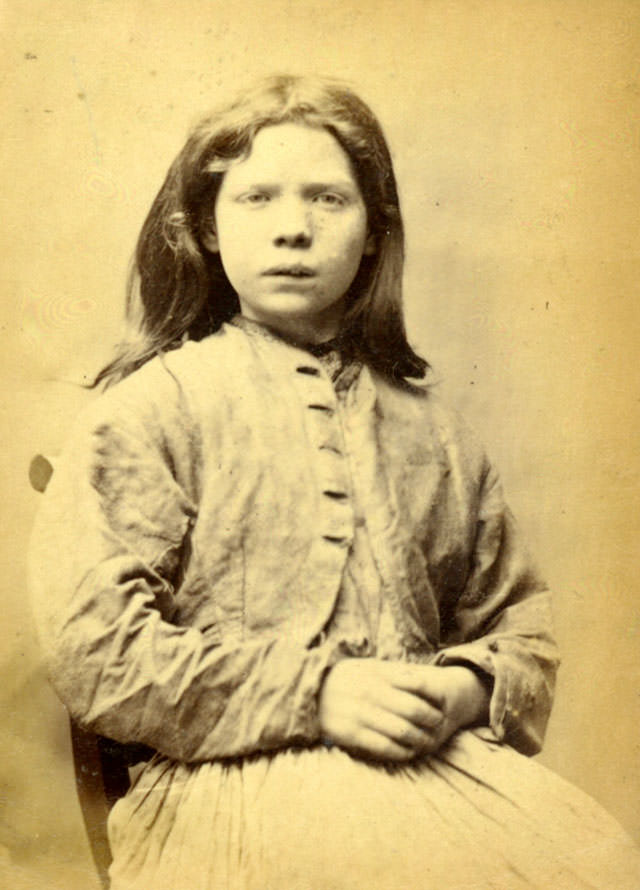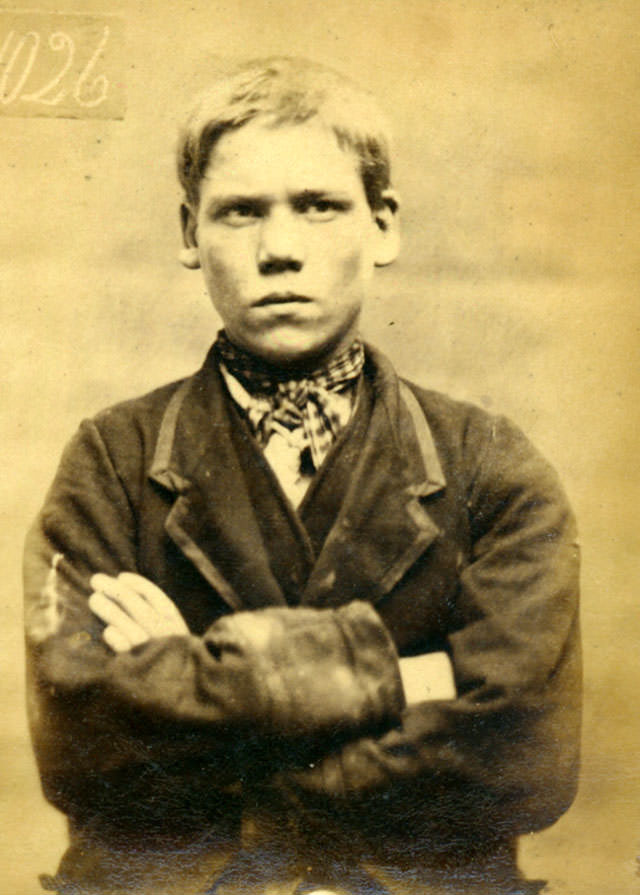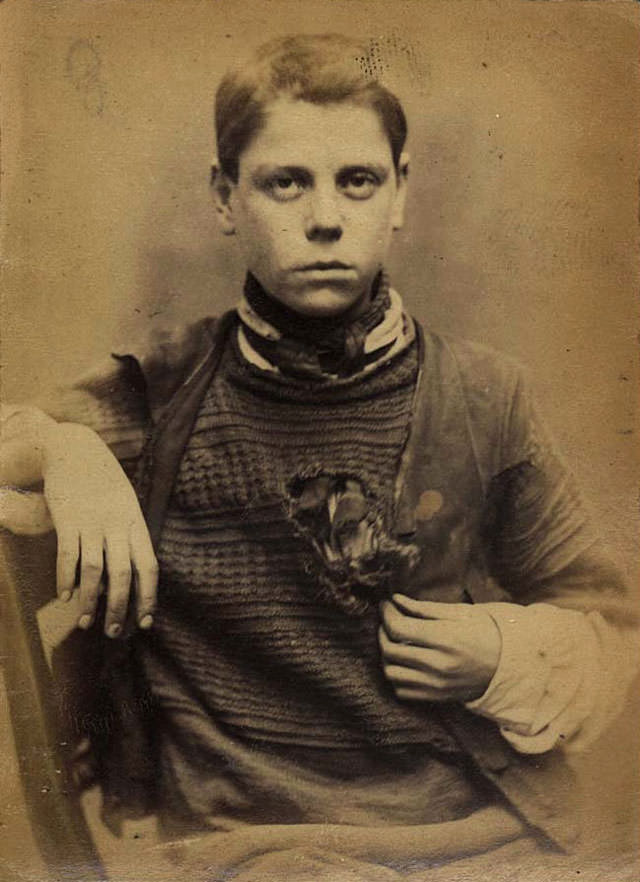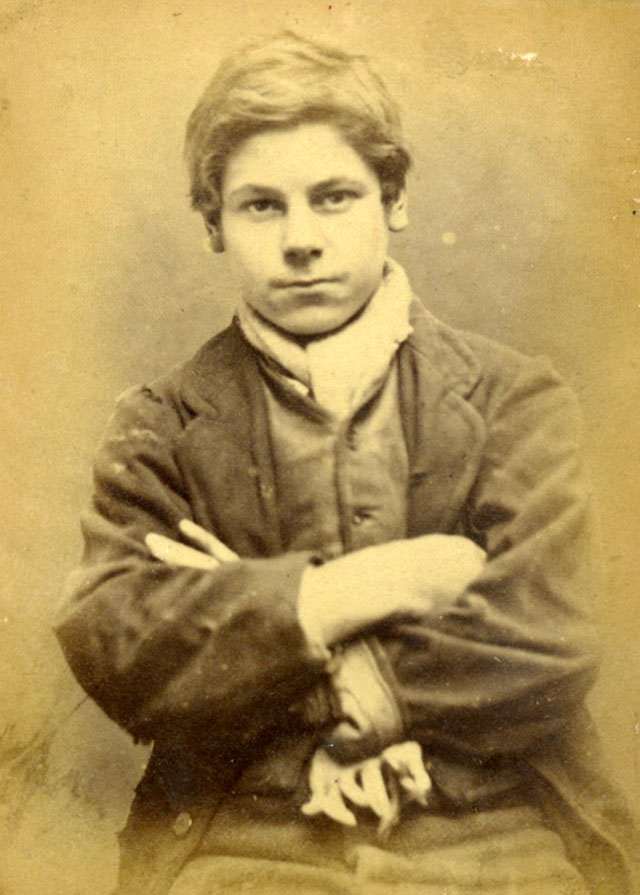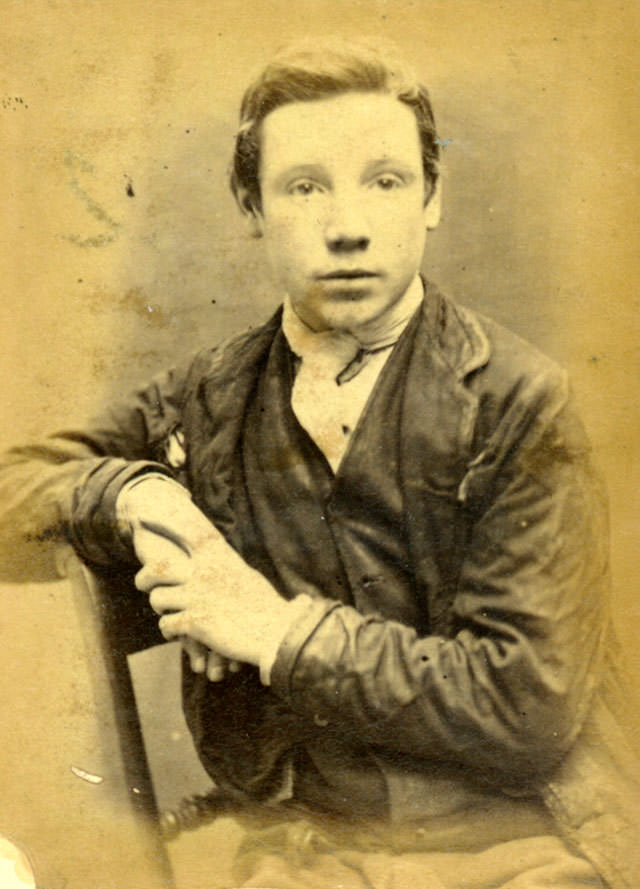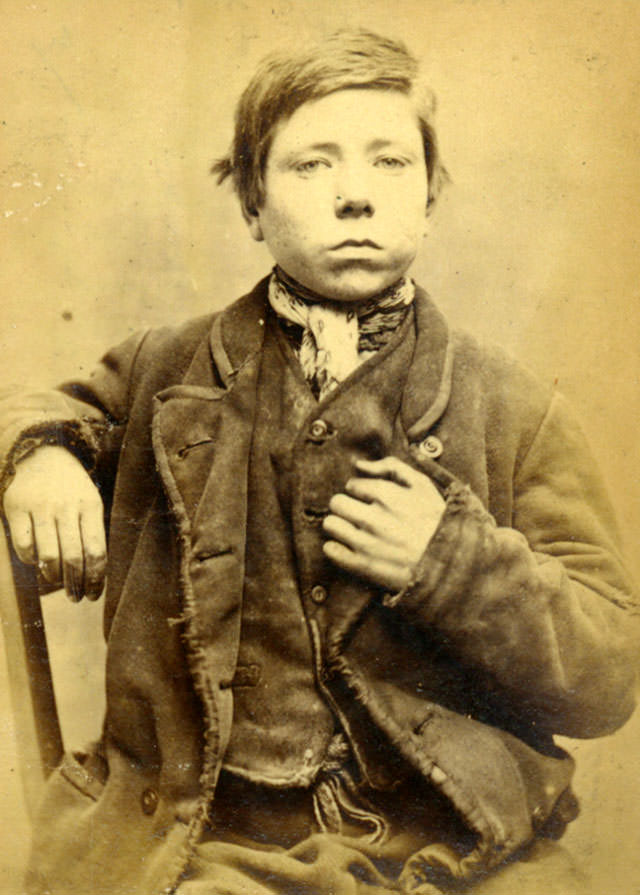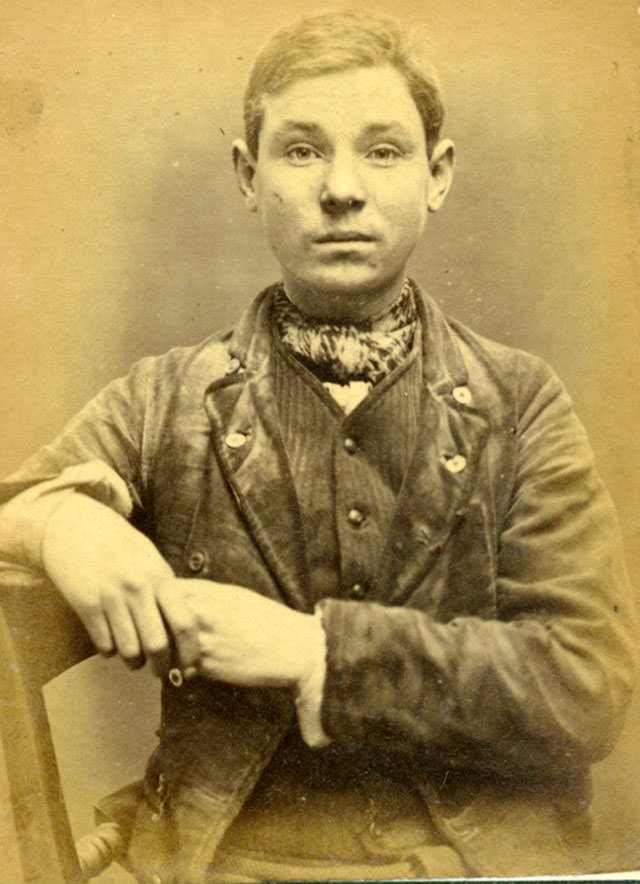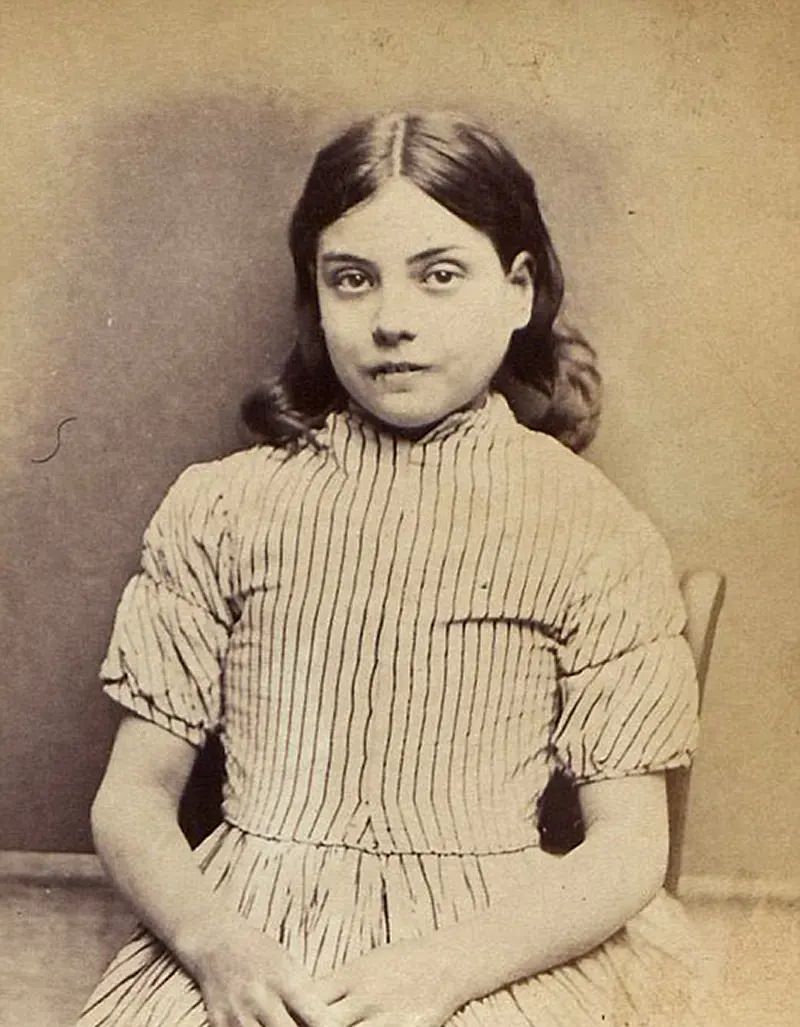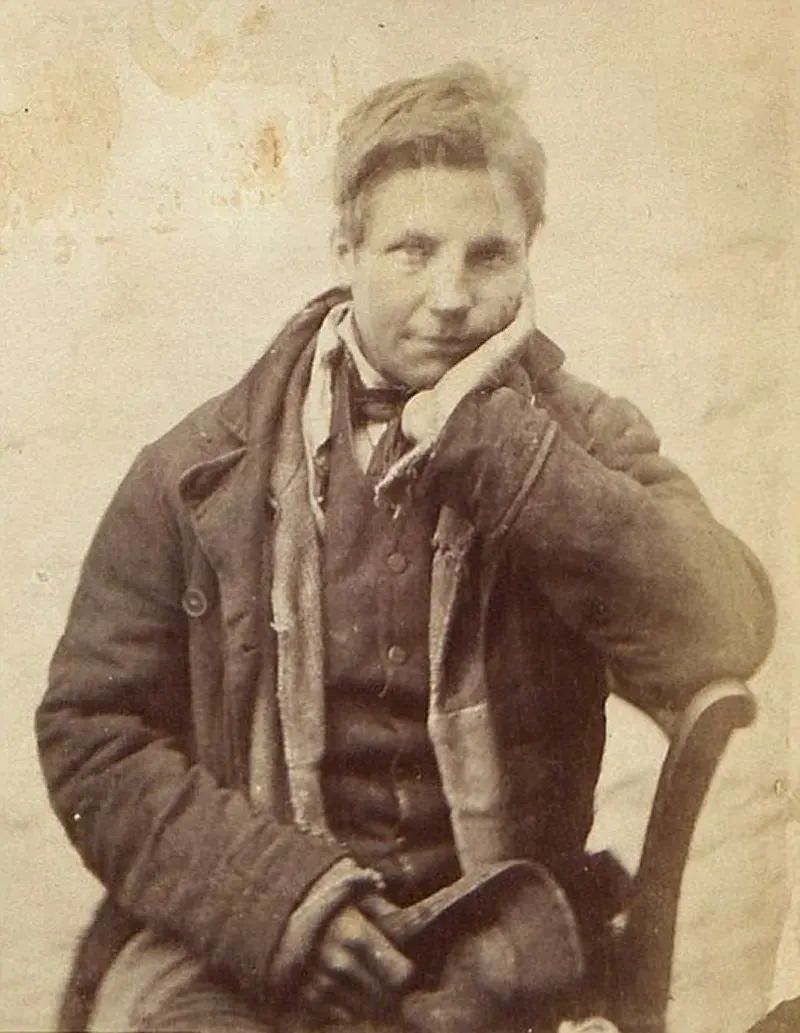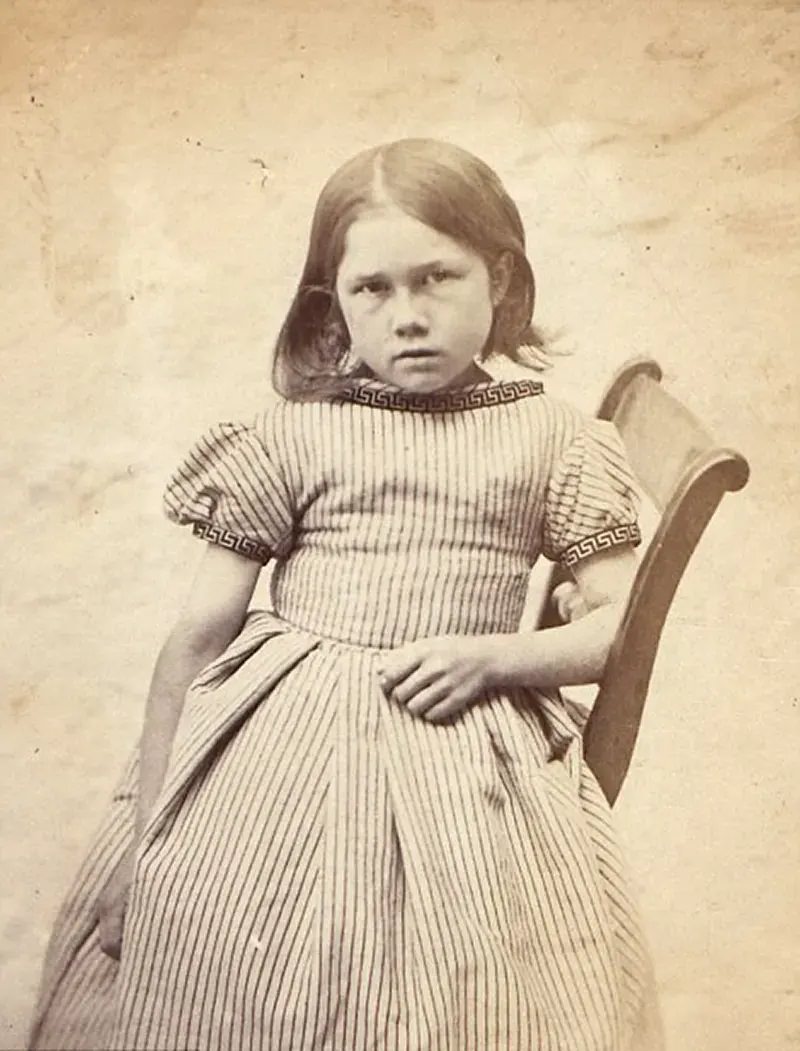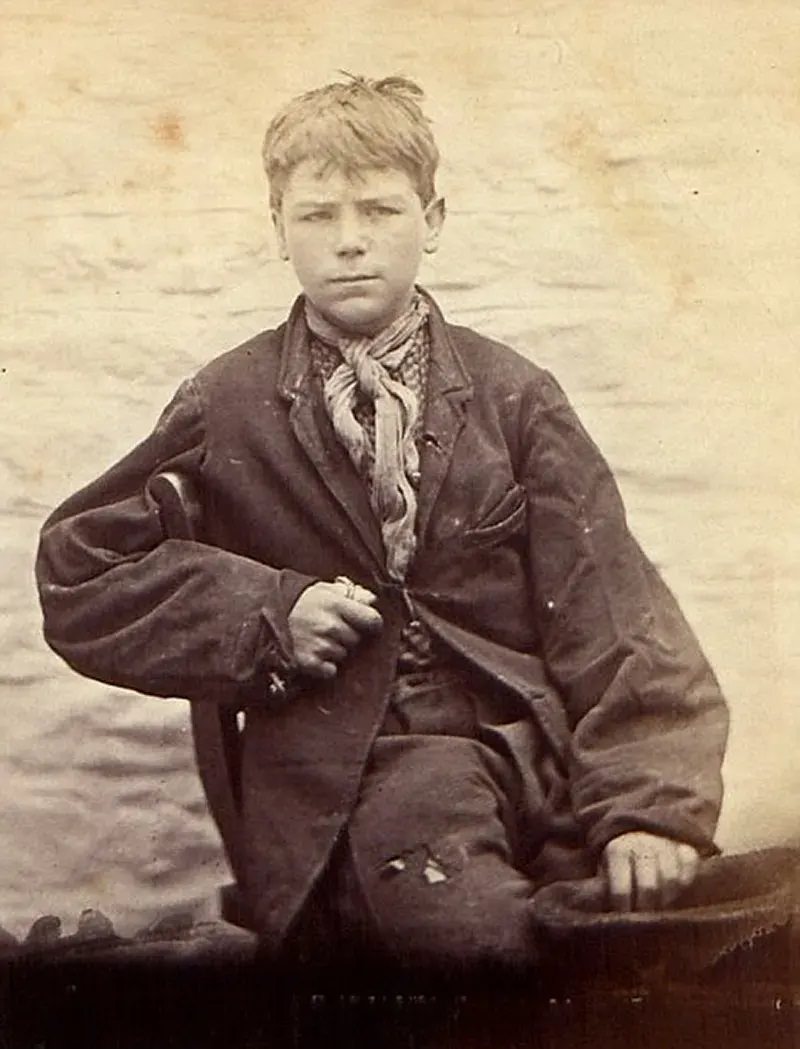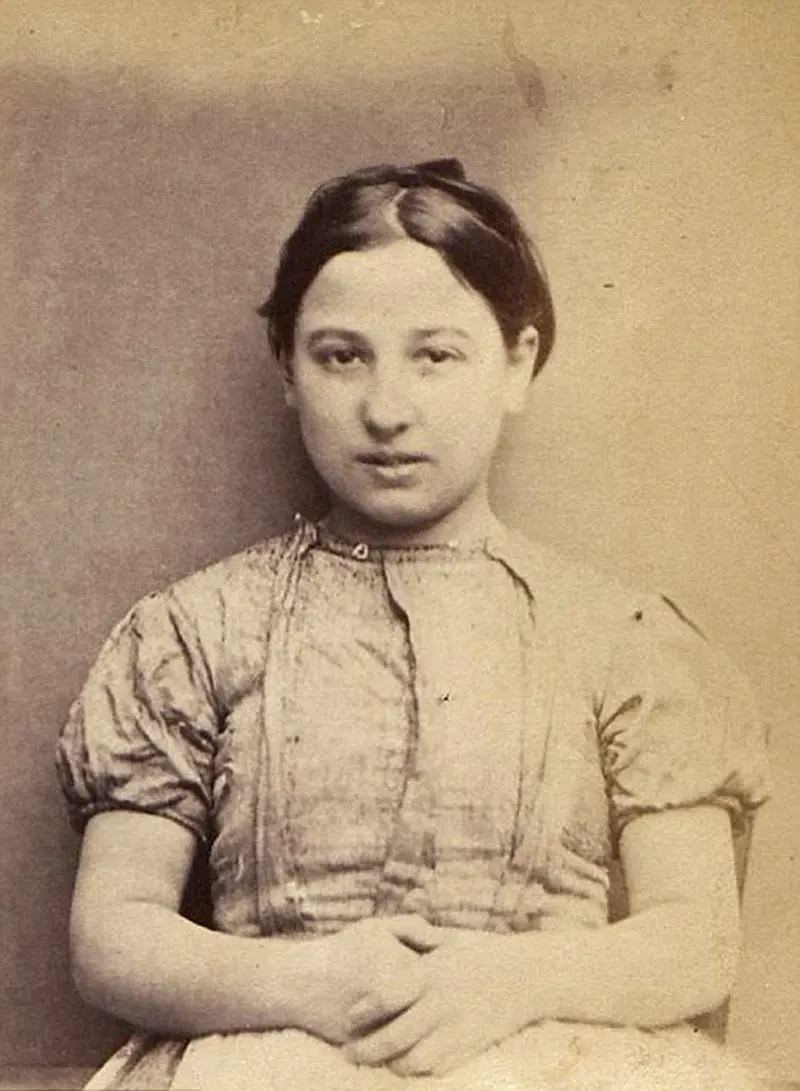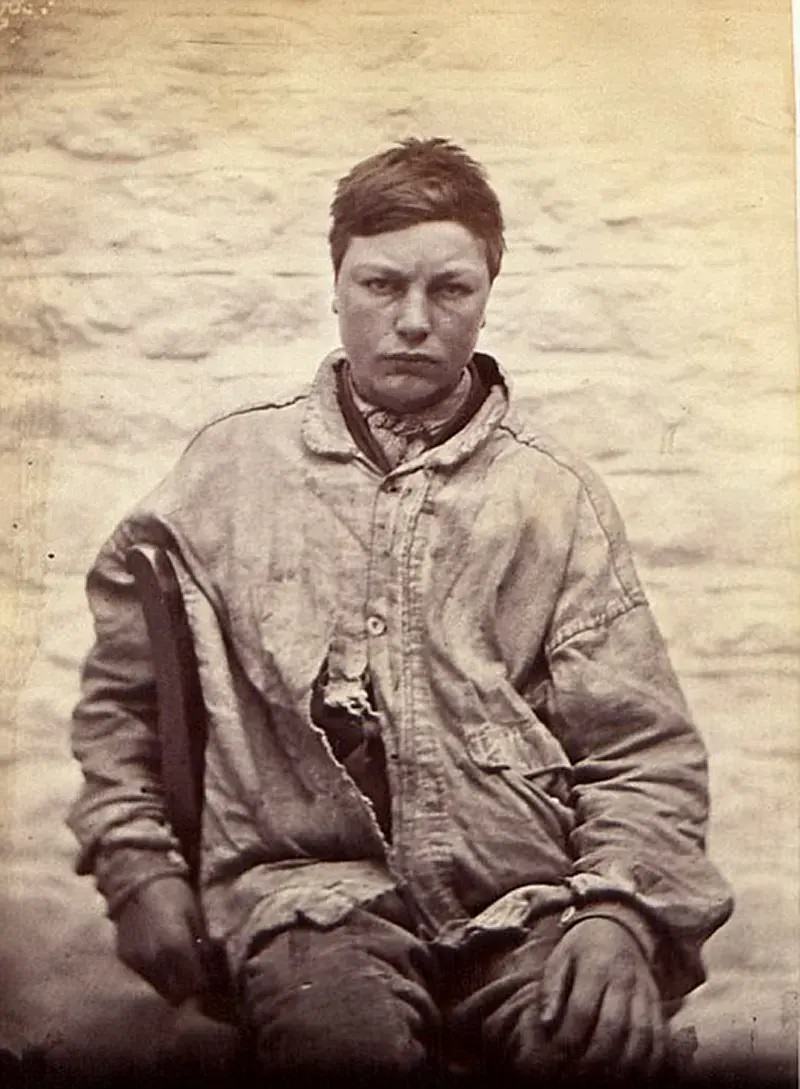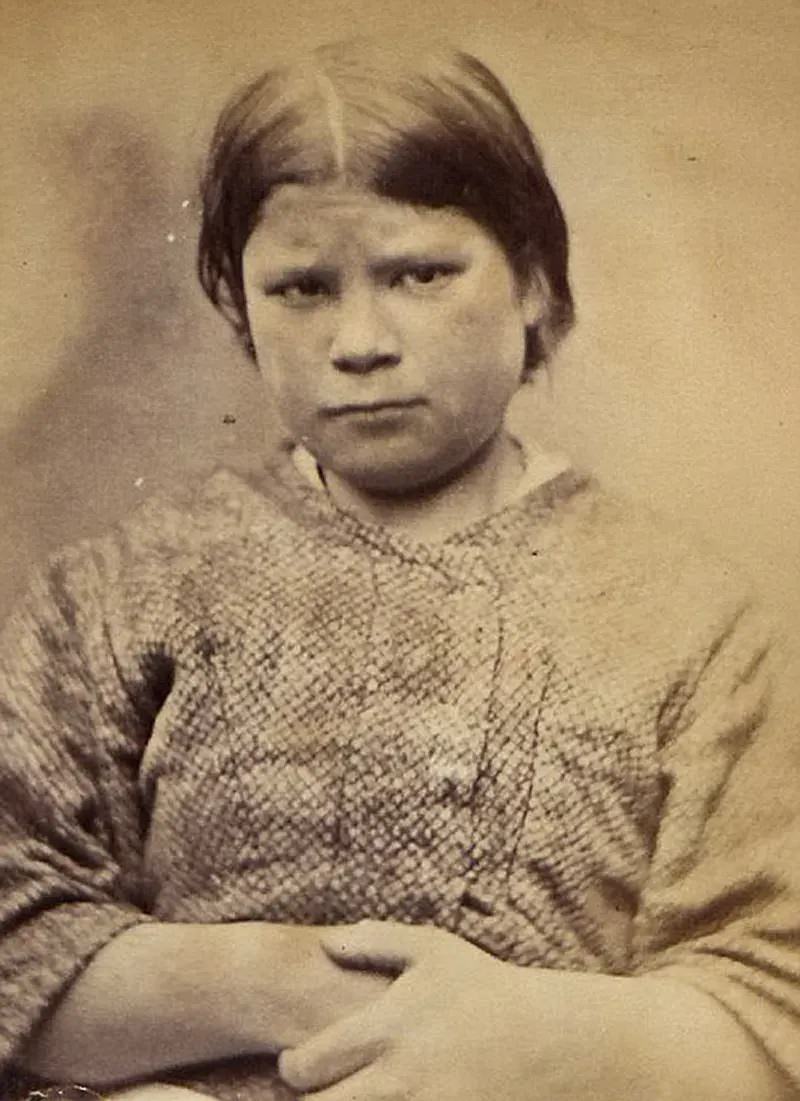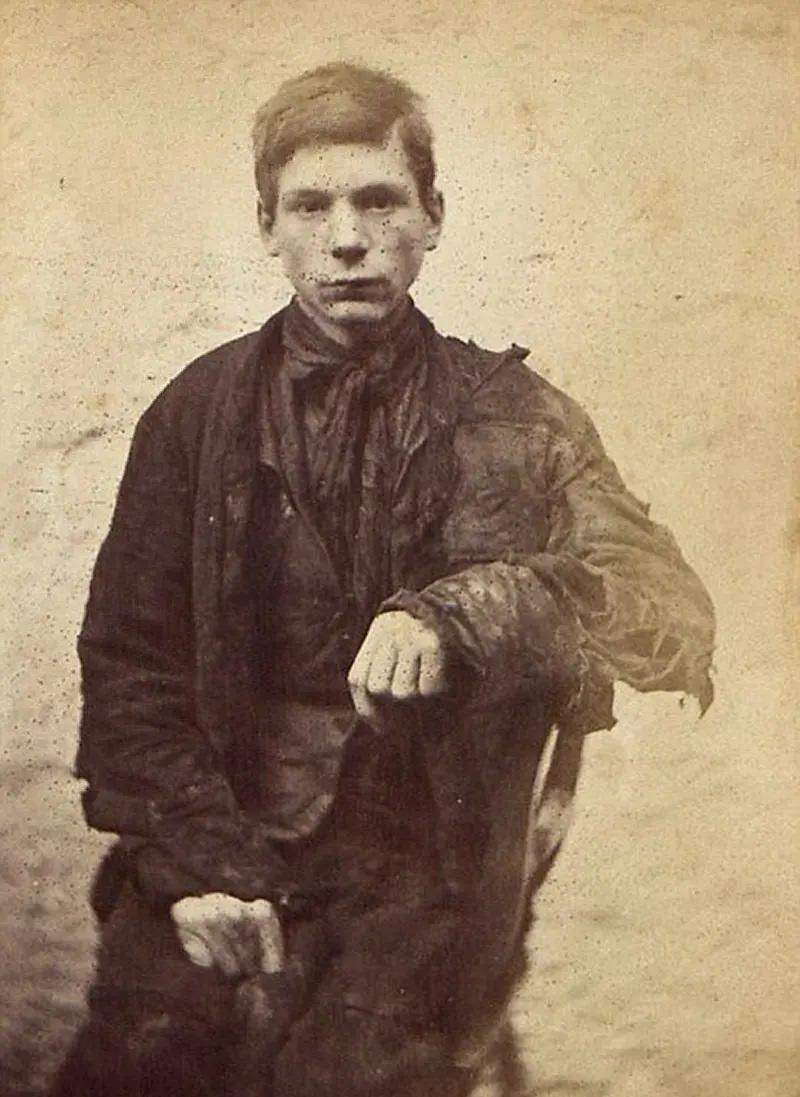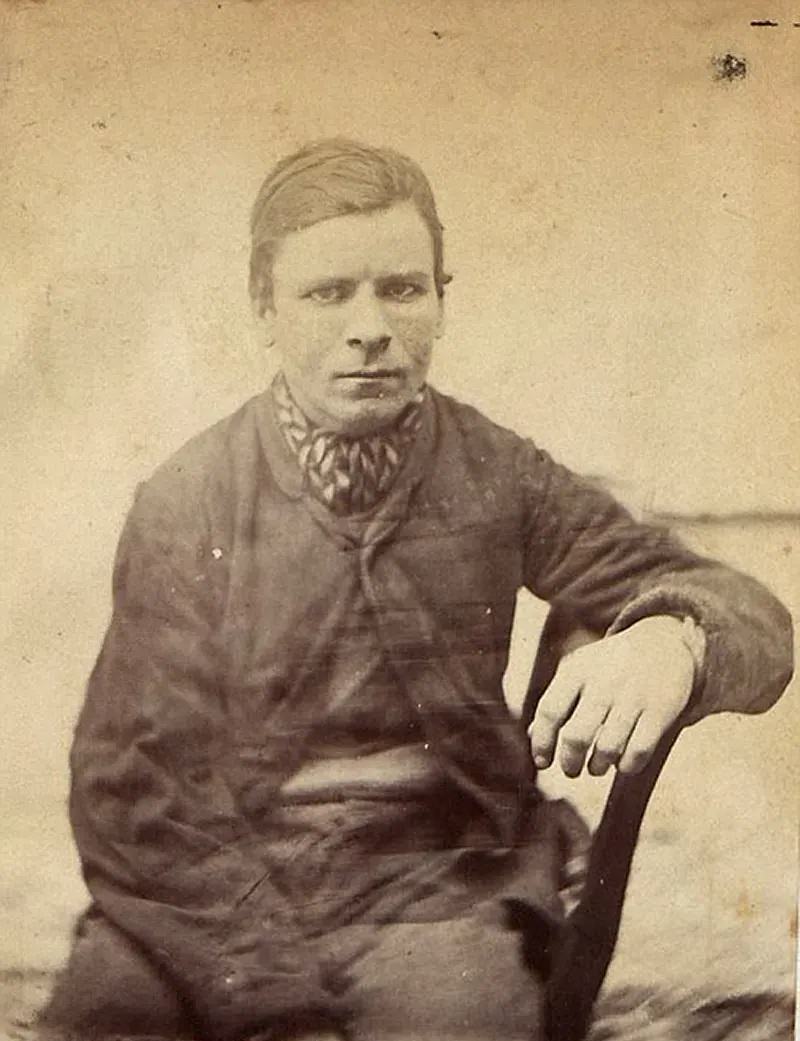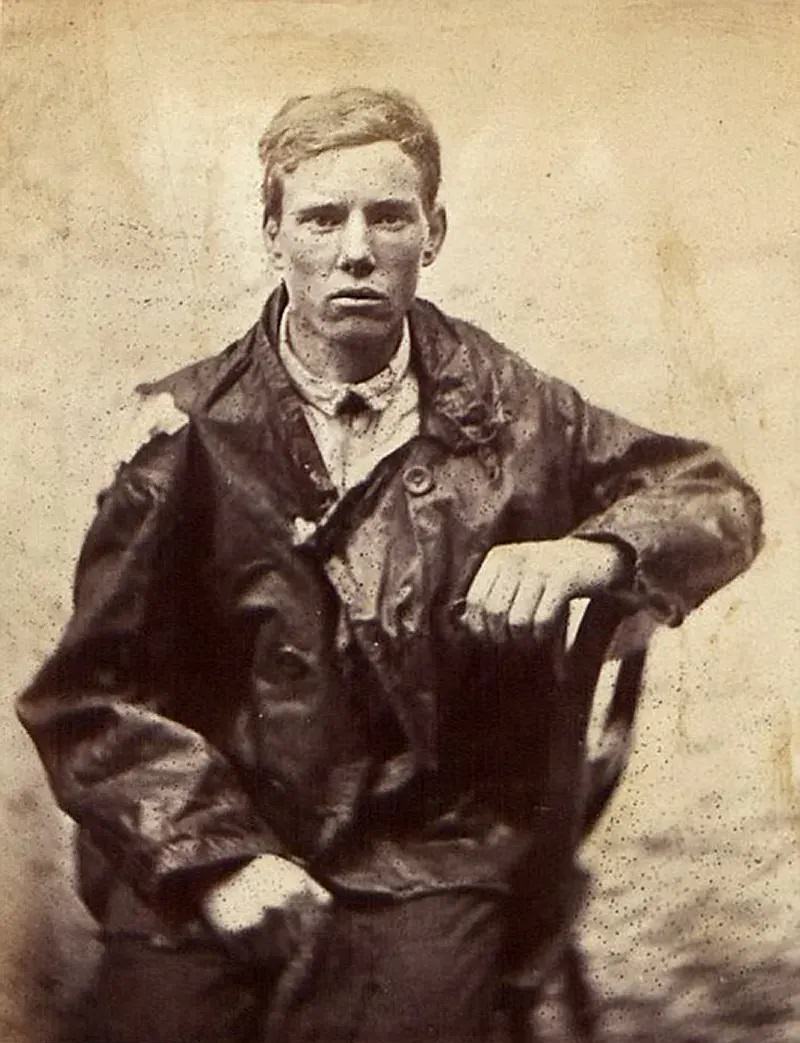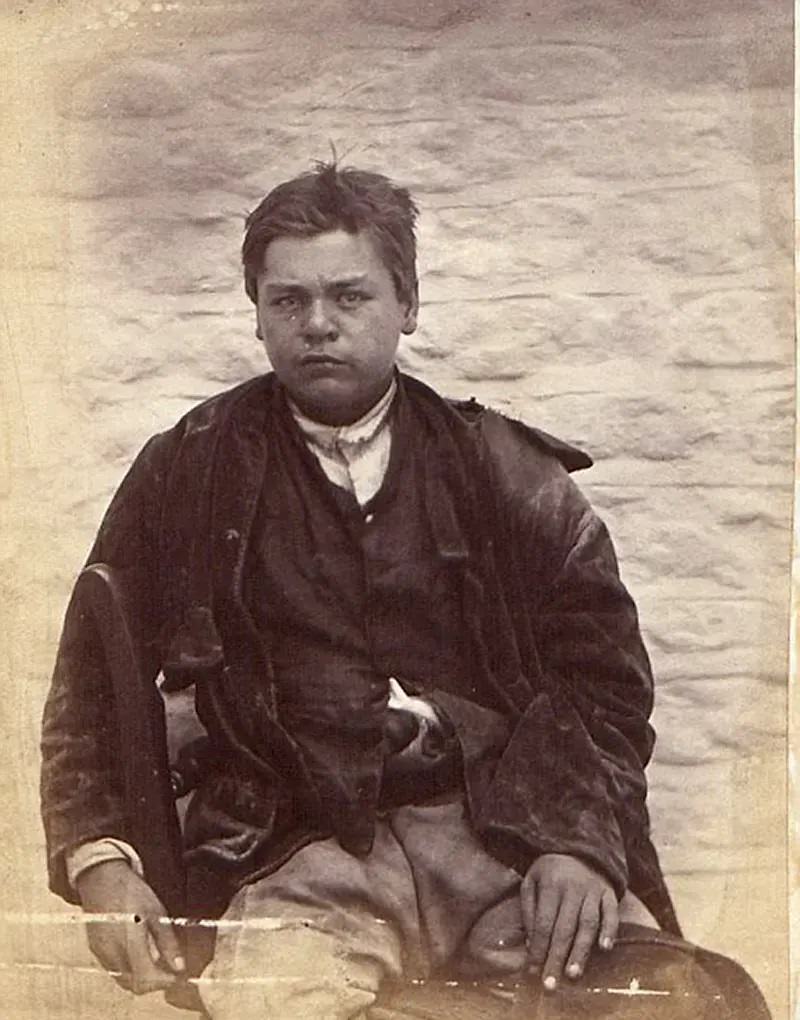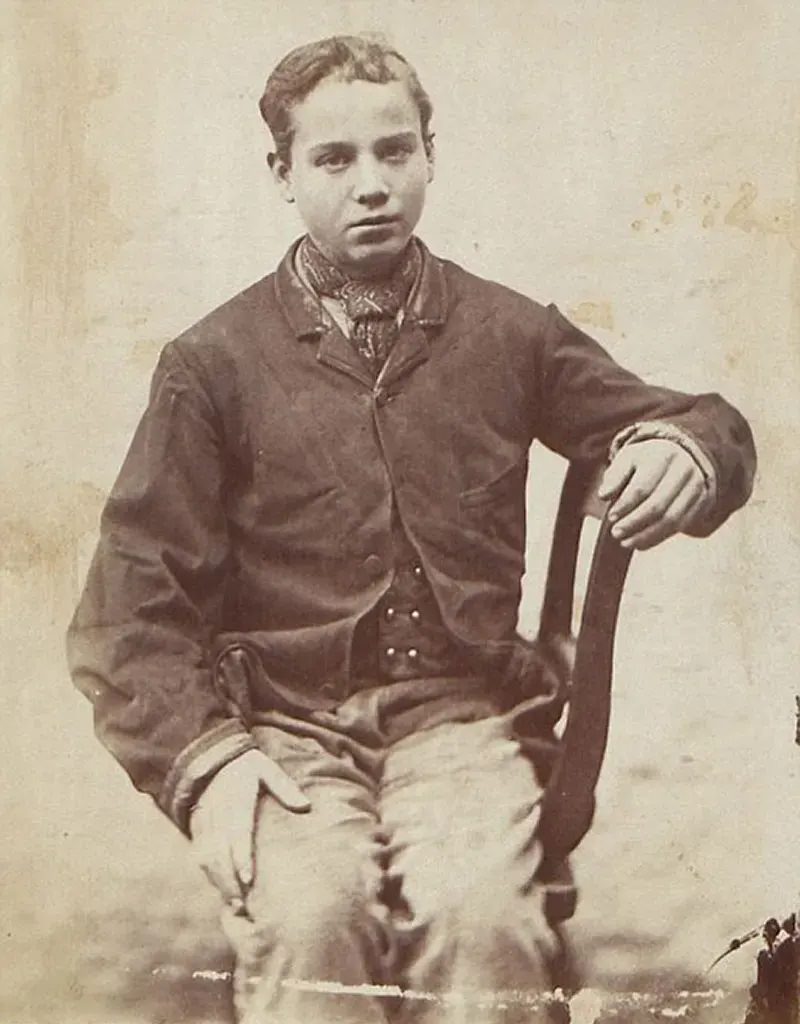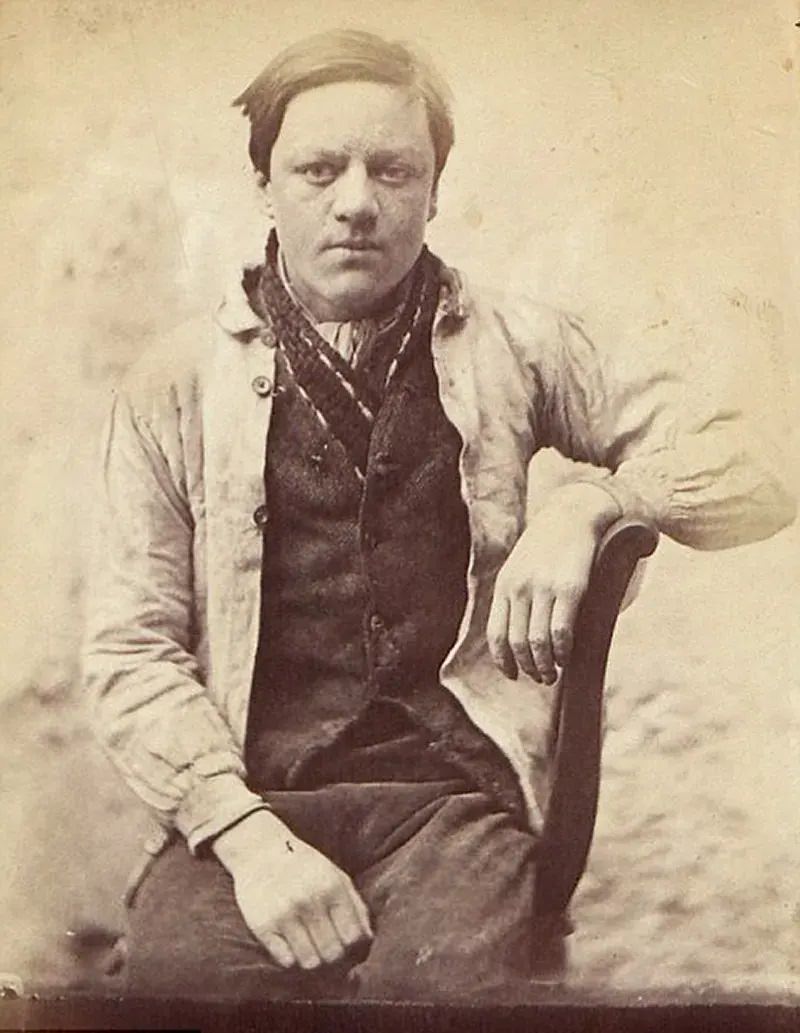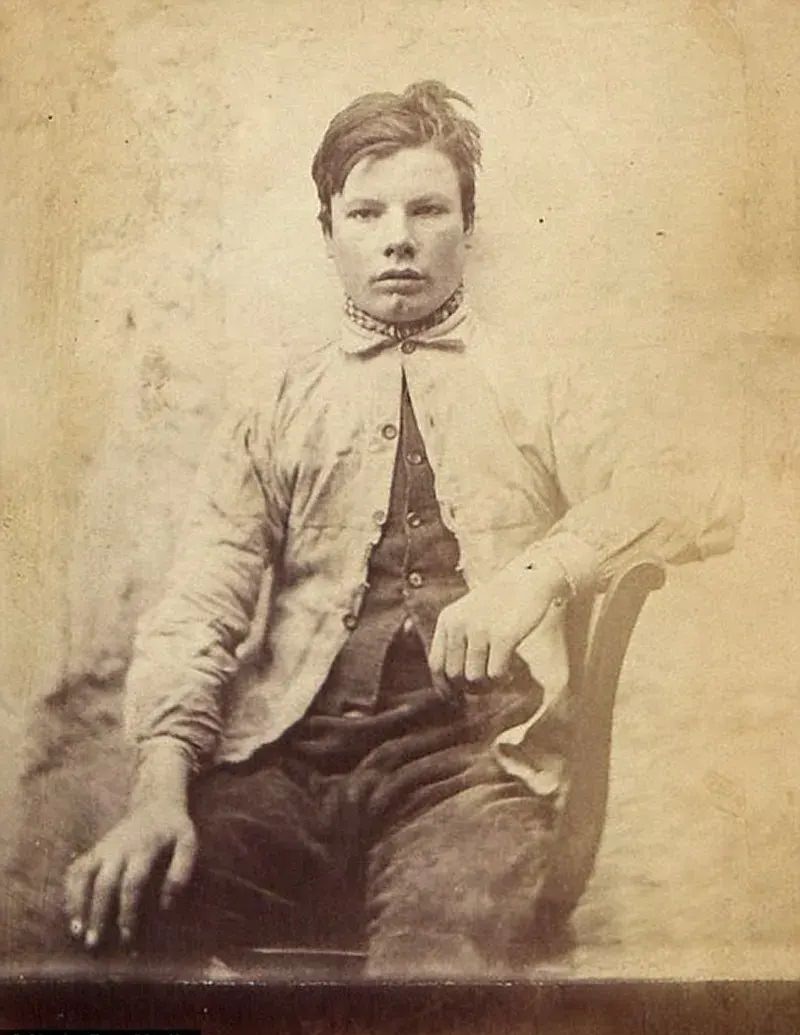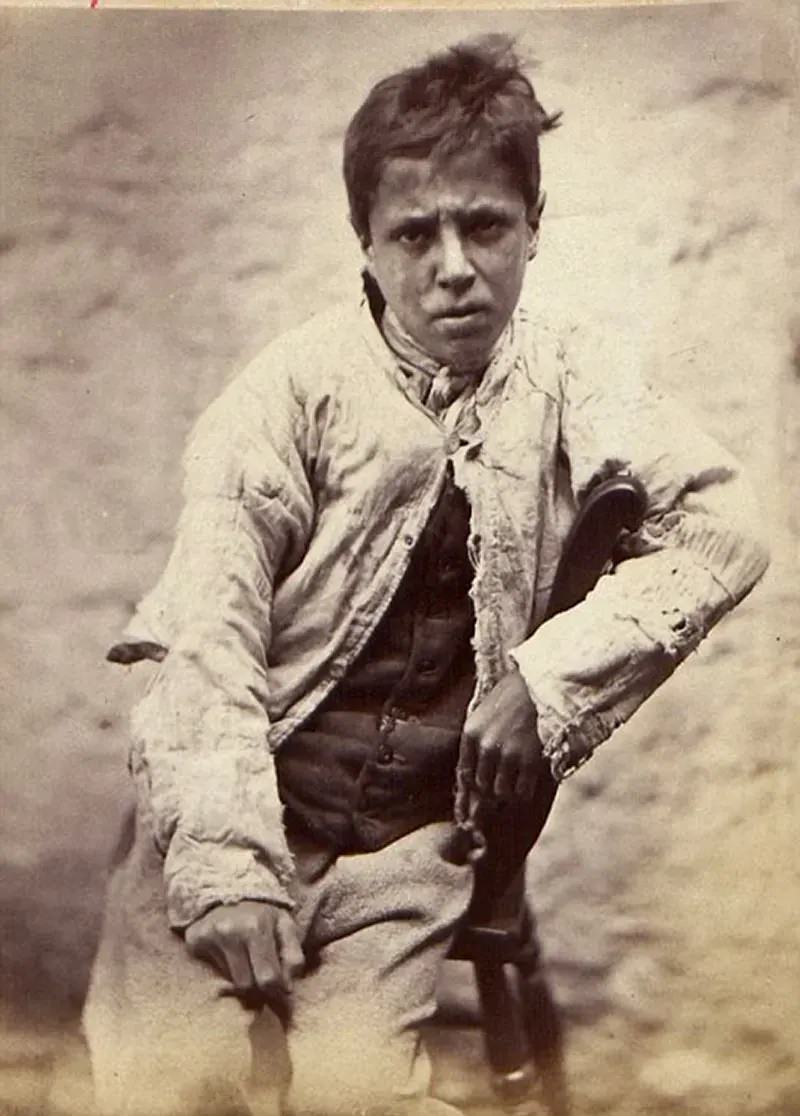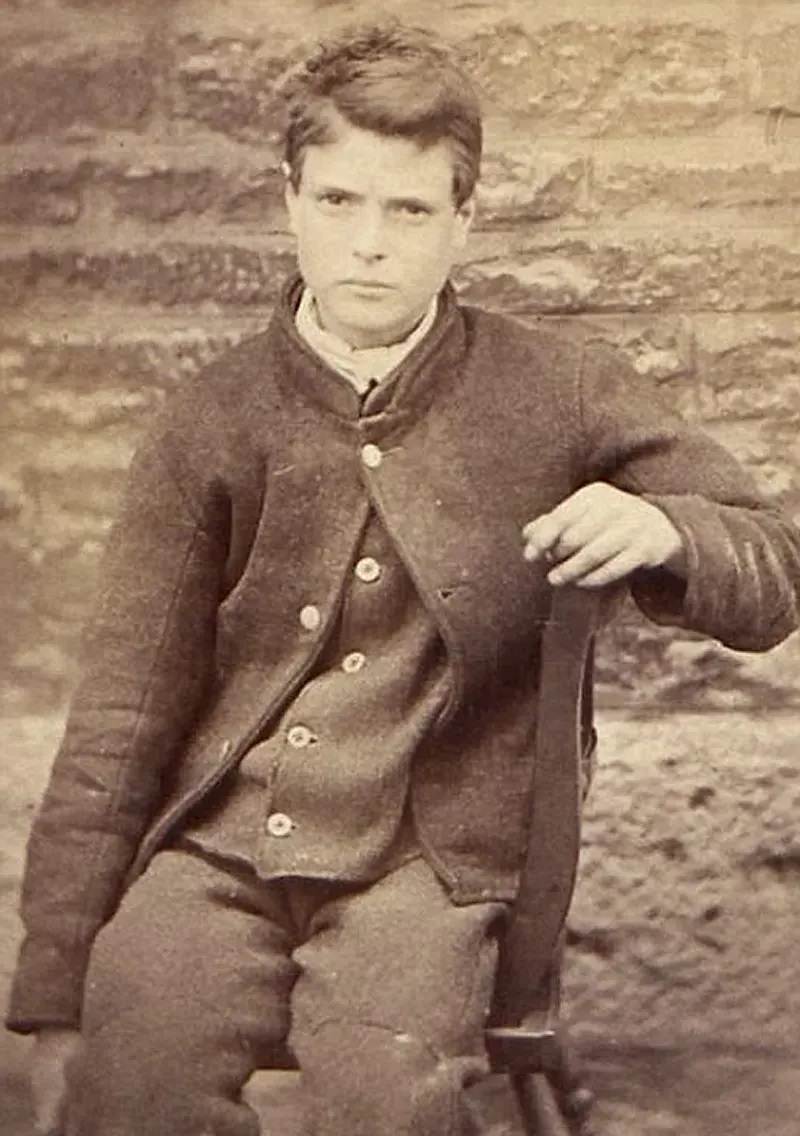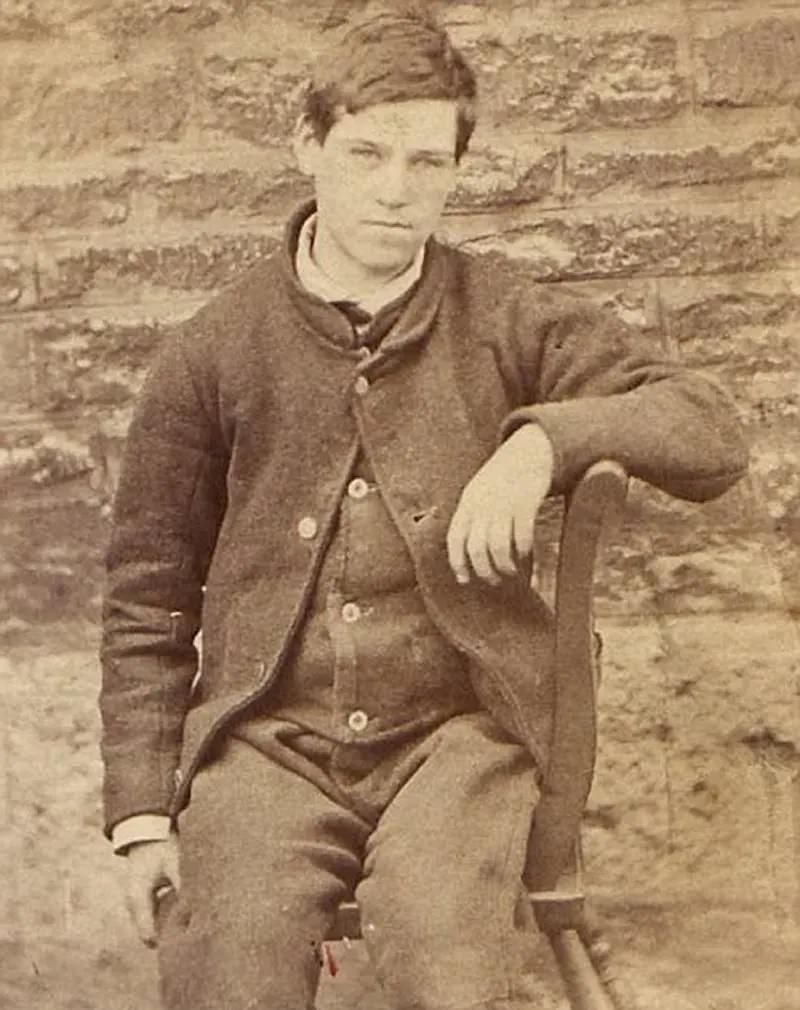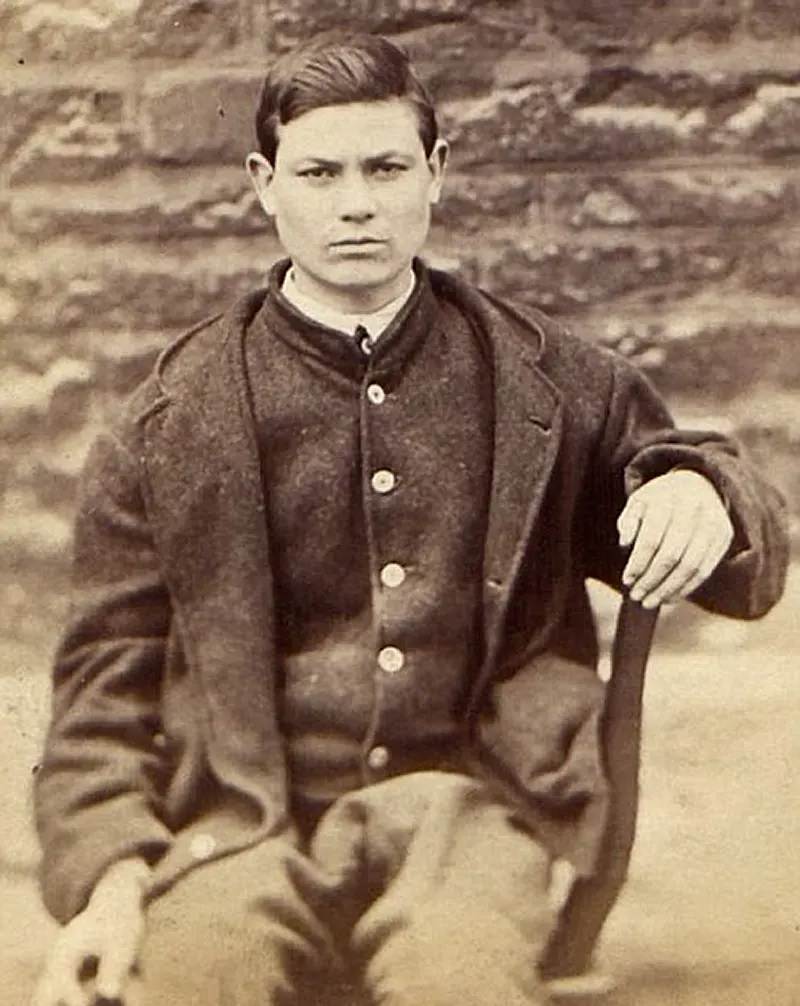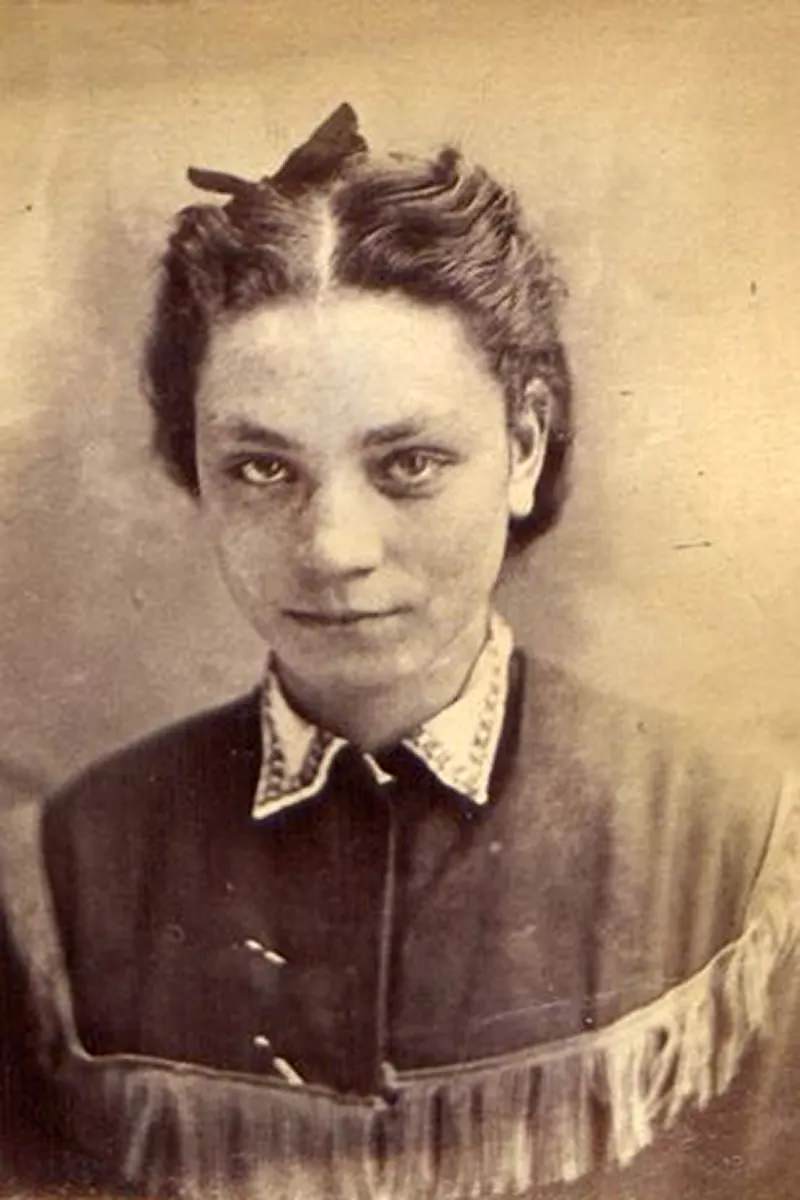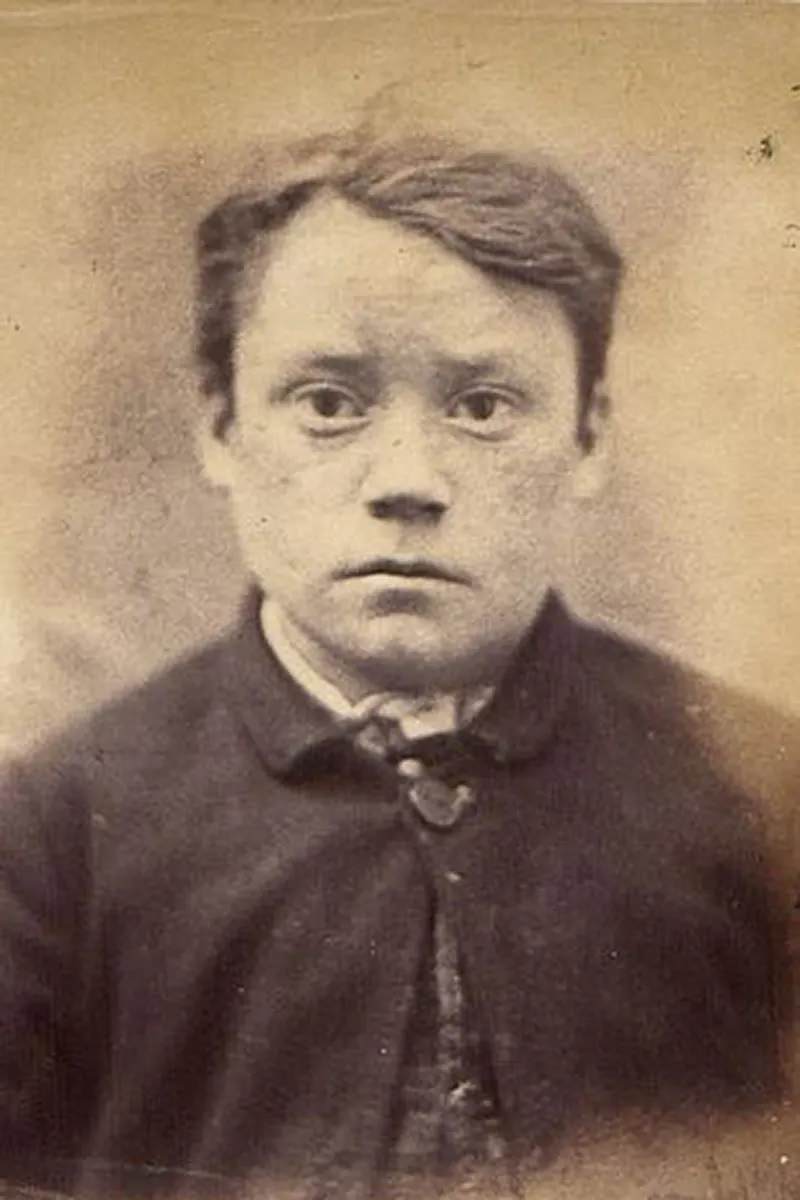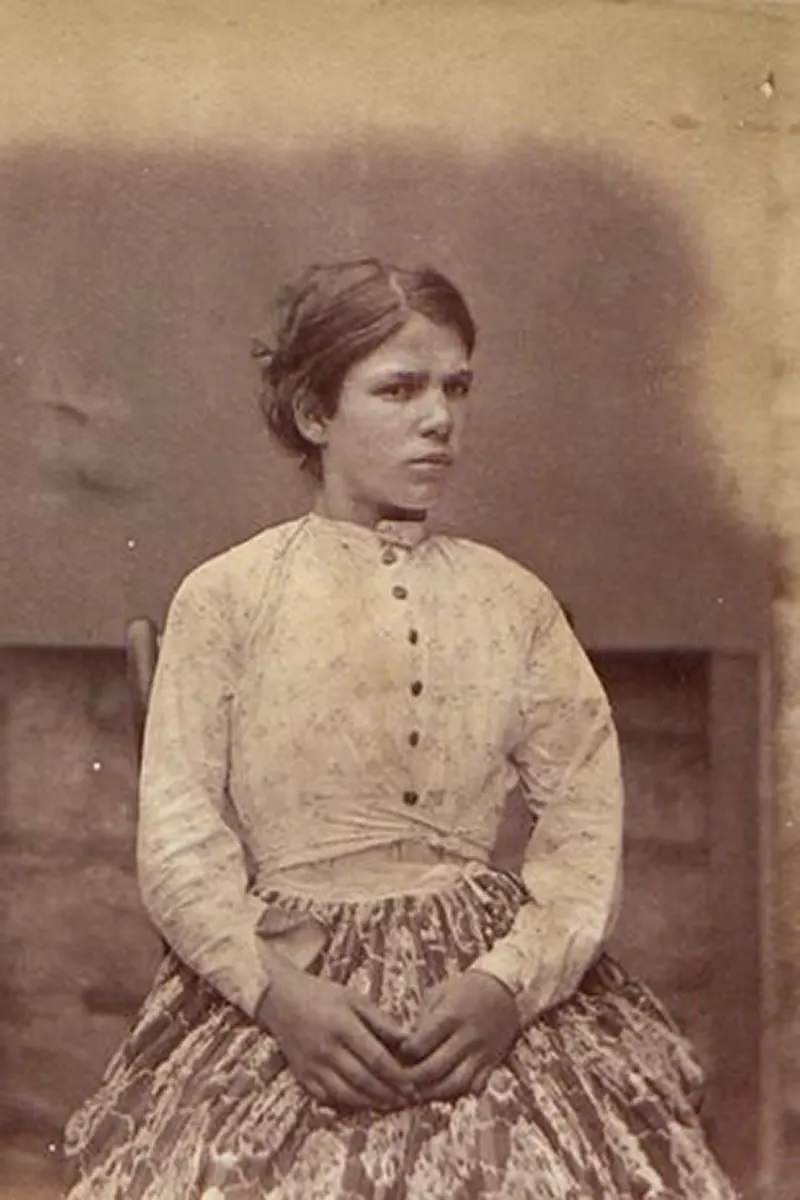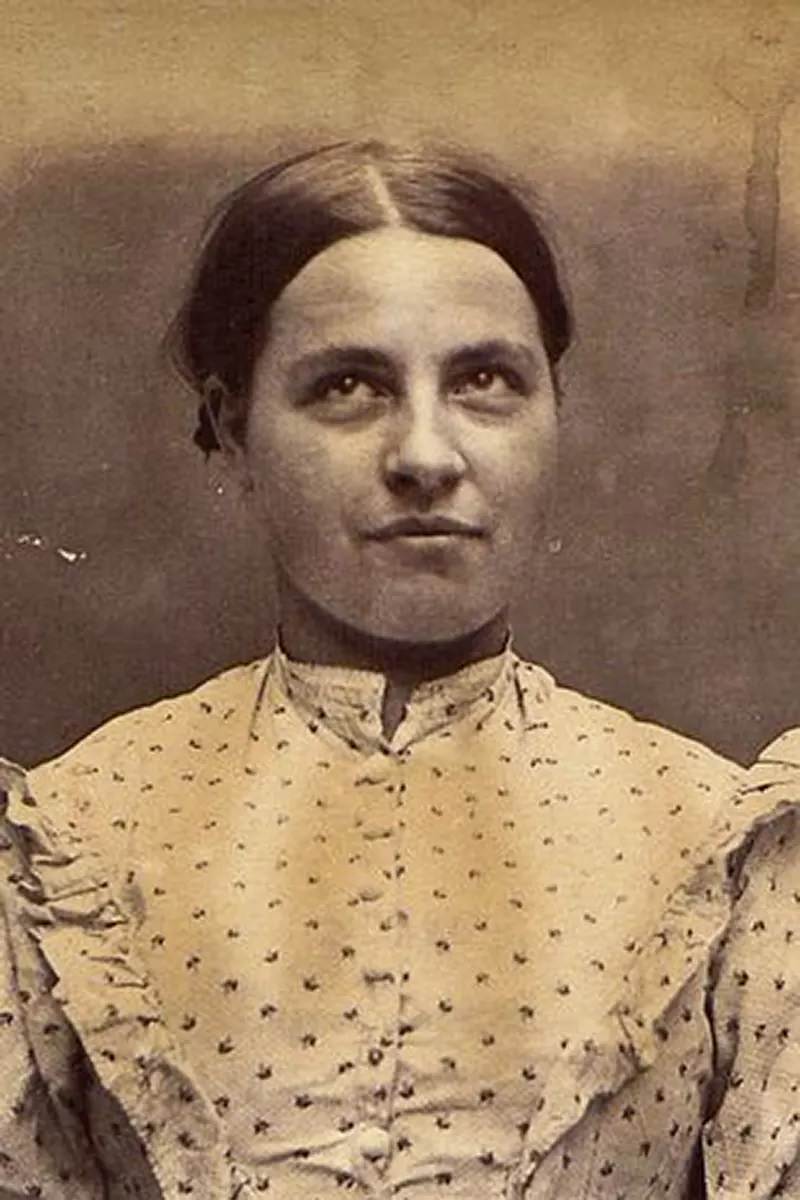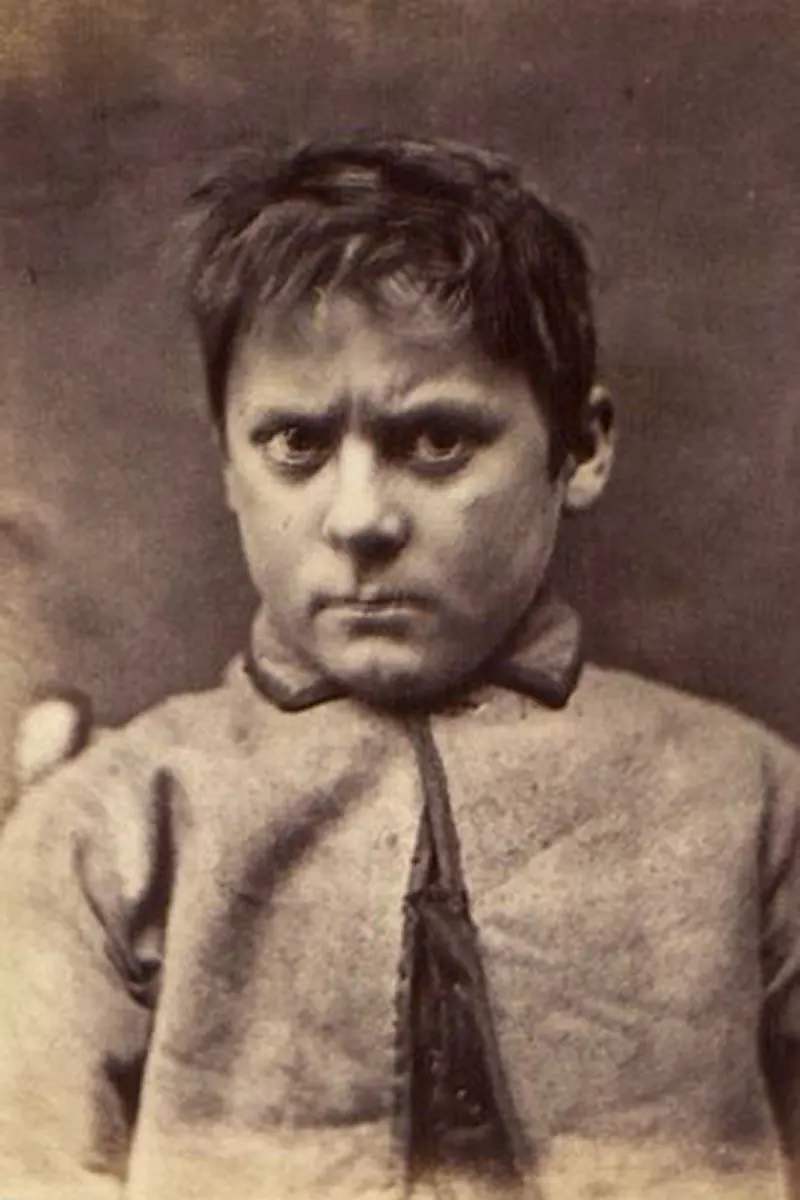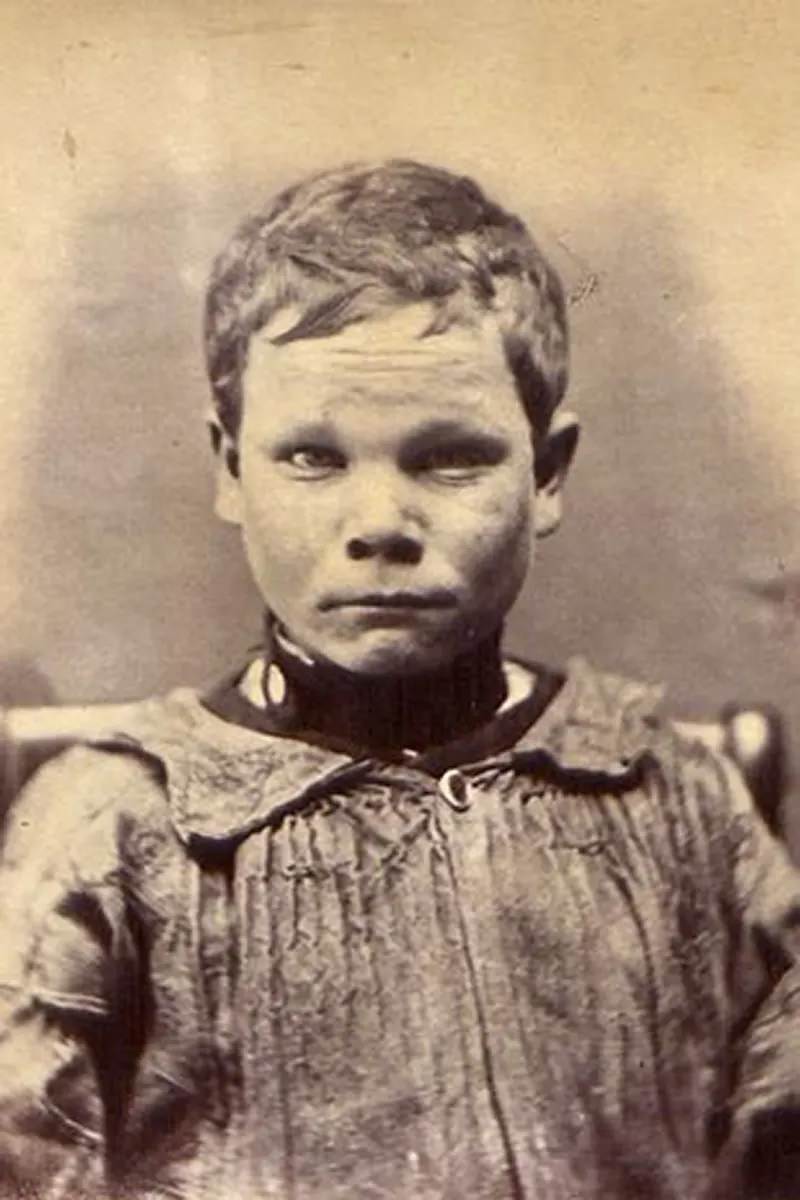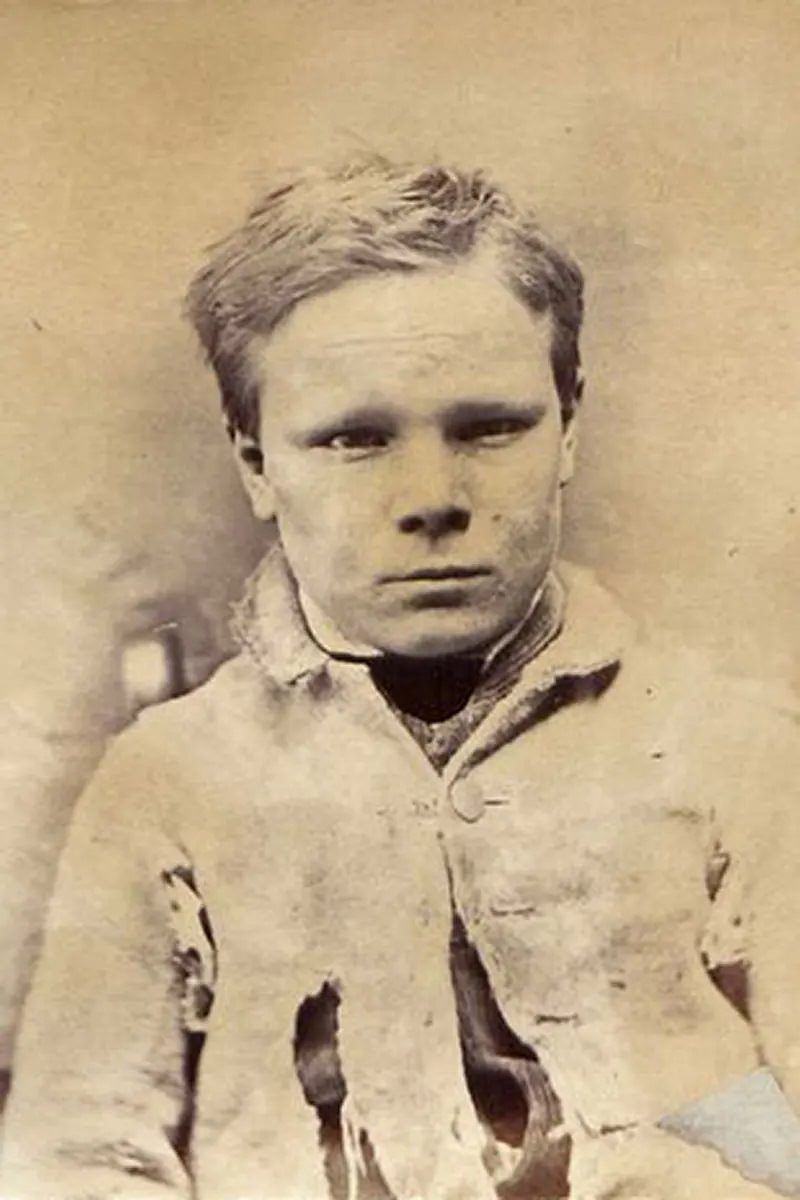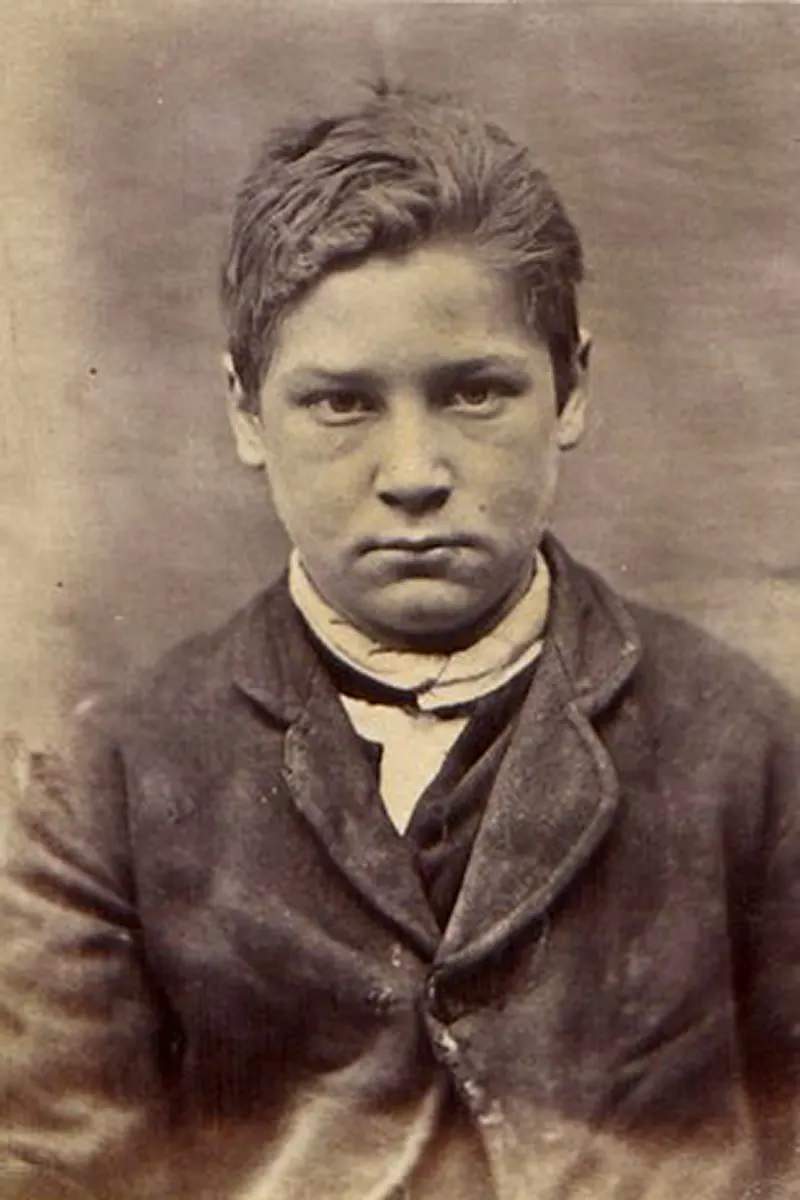The haunting mugshots here depict Victorian child criminals, some as young as 12, who faced harsh punishments for minor crimes. The photographs were taken in the 1870s at Oxford Gaol, a prison that later became HMP Oxford. Despite their age, children were often imprisoned for minor offenses during this period. While most of these teenage criminals stole seemingly insignificant items, they faced tough punishments. Jim Westbury was given six months of hard labor and five years at a reformatory school for stealing corn and hay. A 13-year-old girl was sentenced to seven days of hard labor for stealing an umbrella. A 17-year-old man was arrested for stealing a handkerchief, and a 12-year-old girl was jailed for ten days for ‘pretenses. The other images are brothers John and Thomas Williams, ages 13 and 14, who were arrested for house looting and jailed for six months.
One of the significant issues of Victorian Britain was a crime and how to deal with it. During the first half of the 19th century, juvenile crime was a serious problem, as evidenced by court records and newspaper articles. Pocket picking was particularly troublesome, especially when silk handkerchiefs were stolen, which had a very high resale value and could easily be sold. Young thieves were especially profitable in crowded places like fairs, marketplaces, and public executions. A 15-year-old boy, Joseph Mee, was charged with picking pockets at a public execution at the Old Bailey in 1824. The magistrate described him as ‘hardened and unconcerned’. In 1835, a policeman caught 13-year-old Robert Spencer drawing a handkerchief from a gentleman’s pocket at Greenwich Fair, while another constable told the court in 1840 that 11-year-old Martin Gavan and another boy had ‘tried several pockets’ before stealing a gentleman’s handkerchief from a crowd around a traffic accident.
A step toward treating children differently was the Juvenile Offenses Act of 1847, which established a special court for young people under 14 (soon raised to 16). In 1854, the first Reformatory Schools were established. The Reformatory School held young people for long periods. Long sentences were intended to break the child away from the “bad influences” of home and environment. During most of the 19th century, reformatories were the extent of the government’s willingness to treat children differently. In the early 20th century, attitudes started to shift towards reform. From 1899 children were no longer sent to adult prisons.


